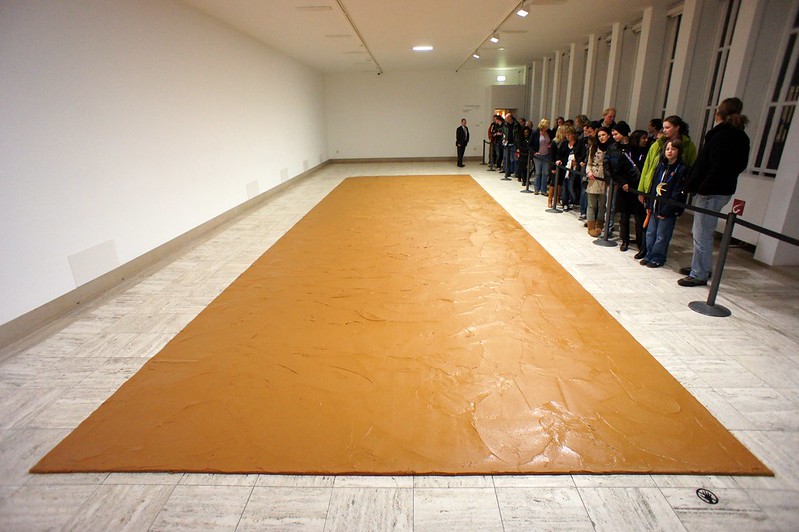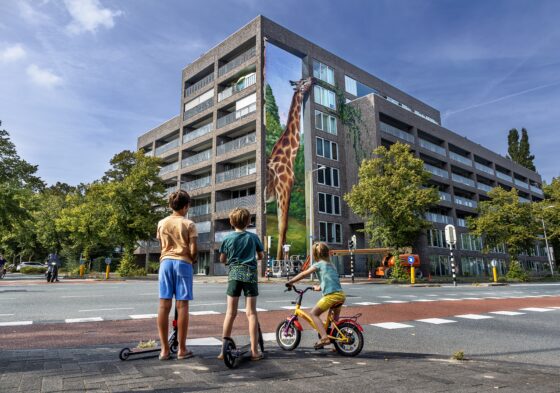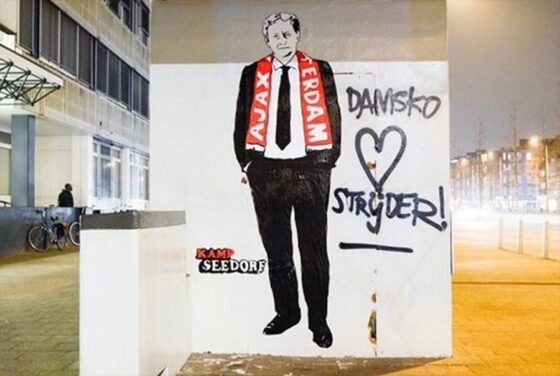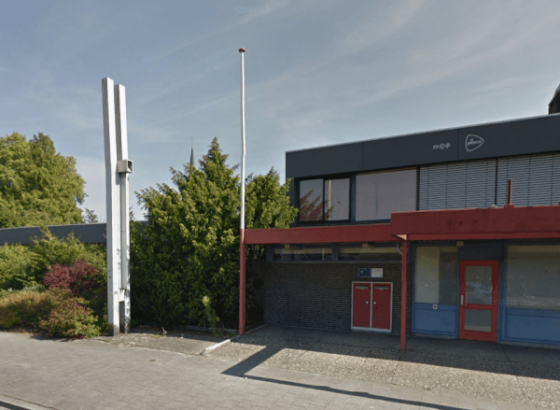Oops: Works of art that were destroyed by accident in NL

When is a work of art not a work of art? Sometimes it can be hard to tell. So here’s a summary of nine artworks in the Netherlands, which came to an unfortunate end.
The peanut butter floor
At least four hapless visitors put their foot in it, literally in this case. The Netherlands’ most mischievous artist Wim T Schippers, now a sprightly 80-year-old, designed his Peanutbutter Floor in 1962 and the Boymans van Beuningen actually bought it.
In 2011, the floor, which was not cordoned off was trod on by several appalled visitors who suddenly felt the soles of their shoes sucked down by an awful and familiar-looking sticky mess. The museum sent them a bill for the “restoration” of the piece.
The beer cans
In 2024, the LAM Museum in Lisse was asking for it when it exhibited All the good times we spent together in a lift shaft. Comprising a couple of painted but very realistic dented beer cans a construction worker tasked with repairing the lift chucked the whole thing out.

A frantic search ensued and the cans were eventually recovered just when they made their way to the recycling plant. The museum, good-naturedly said it was an honest mistake and a compliment for artist Alexandre Lavet’s skill at making art imitating alcohol.
The smudge
A worker at De Hallen museum in Haarlem, thinking a dark spot on a small canvas called Portrait of a Nail by Bas van Wieringen was a smudge proceeded to remove it, leaving it pristine. Not that he was thanked for his trouble. The work has since been restored to its former dotty glory.
The green steps
A case of ars longa, vita brevis because this artwork of living plants, designed to cover a flight of stairs in Utrecht, and painstakingly nurtured and pampered for three years was blasted into oblivion with a weed burner in the space of just 15 minutes.

Volunteers were aghast at finding the “Disappearing Steps” had once again appeared, and no doubt the unfortunate council worker, who had not been told the steps were art, thought it a job well done. But plants can grow again, which leaves the question if, four years on, this is now a copy.
The giraffe fodder
Another nature-based art that was nipped in the bud was the ivy-clad wall of an apartment building in Utrecht. Made to grow as if to surround and provide food for a painted giraffe, housing corporation Woonin decided the ivy would have to go in favour of a clematis which “could attach itself better to the wall”.

In 2024, just a year into its life as a living artwork, the ivy was ripped out, to the chagrin of artist Jan Heinsbroek. So not so much an accident but an act of wilful destruction.
The not by Banksy balloon
Red faces all around at the University of Amsterdam in 2016 where a painting of a Syrian girl holding a red balloon on a wall at the Oudemanhuispoort thought to be by Banksy was painted over “by accident” during restoration work. Experts said at the time the painting was not a genuine Banksy but a copy of a series called Balloon Girl he made in 2024 to highlight the conflict in Syria.
The Amsterdam mayor
In 2017, a life-size graffiti-style portrait of Eberhard van der Laan appeared at the entrance of the Wibautstraat in honour of the popular mayor. Everybody loved it, including public transport company GVB and the mayor himself.

Unfortunately, one of the cleaners had been on holiday and failed to get the message that this particular graffiti was to be condoned and duly removed it. In 2019, a plinth with the same drawing was revealed at the Mercatorplein in de Baarsjes, where Van der Laan lived for a time.
The screwed up paper
Consternation at the Vishal art centre in Haarlem in 2001 where a cleaner lobbed a piece of scrunched up paper in the bin, unwittingly destroying “Work no.88: A sheet of A4 paper crumpled into a ball” by Martin Creed and worth €500. A curator at the museum fished the limp work of art out of the bin and smoothed it out to dry. It was then scrunched up again but the story does not tell if Creed had a hand in it.
The metal pole
When the post office in Raalte in Overijssel was raised to the ground to make way for an apartment building, the demolition men also destroyed a sculpture by Willem Hussem (1900-1974) commissioned by what was then the PTT in 1969. The work, reduced to a heap of mangled aluminium, was estimated to be worth some €100,000 at the time.

The project developer protested his innocence, saying no one told him the stark 10-metre tall pole was a work of art. Hussem’s other works continue to be safe from harm at the Stedelijk Museum in Amsterdam, the Gemeentemuseum in The Hague and the Boijmans van Beuningen in Rotterdam.
Thank you for donating to DutchNews.nl.
We could not provide the Dutch News service, and keep it free of charge, without the generous support of our readers. Your donations allow us to report on issues you tell us matter, and provide you with a summary of the most important Dutch news each day.
Make a donation